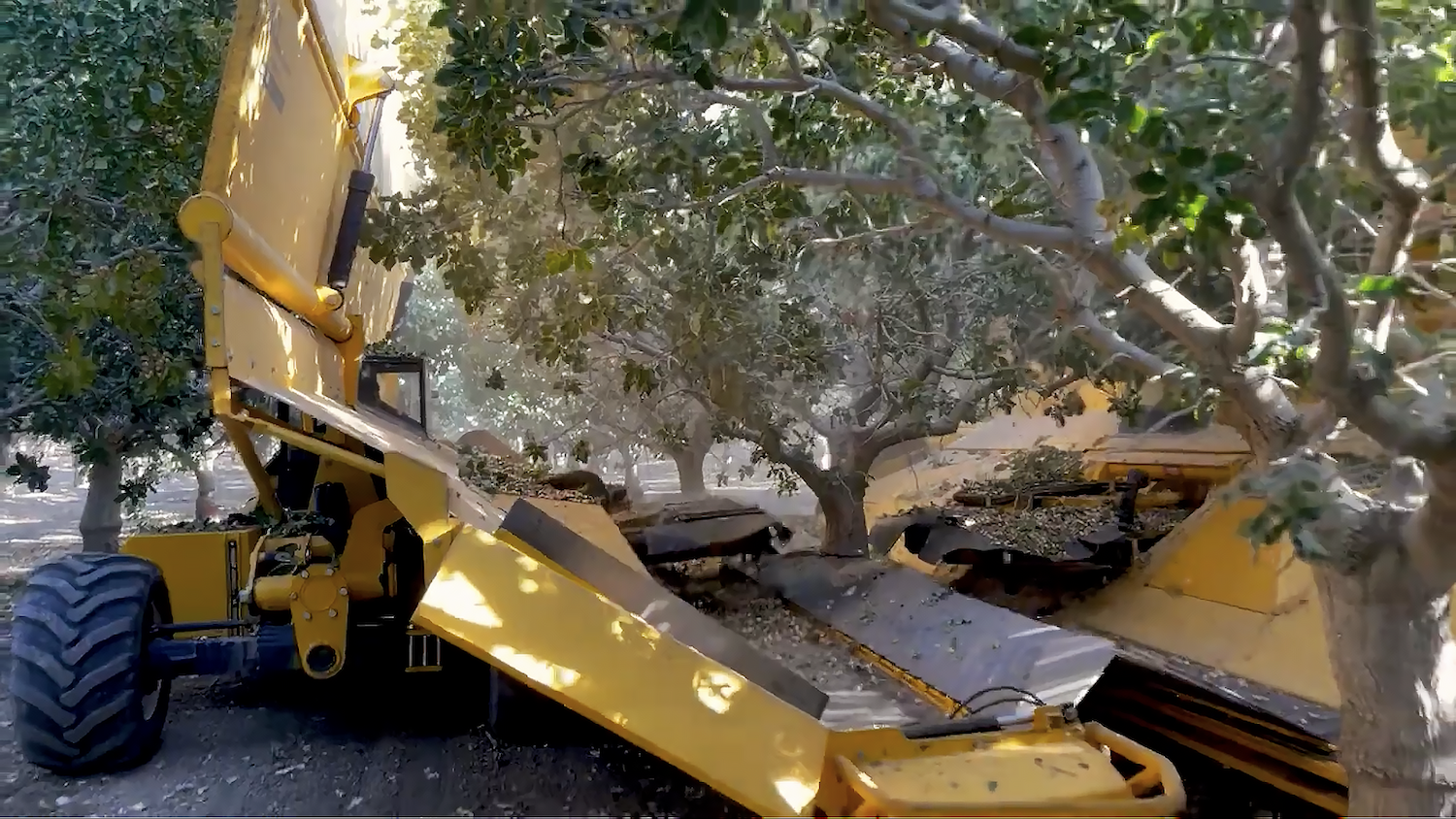
Nearly 80 percent of the world's almonds are grown in California. A pilot project in the state aims to make almond farming more sustainable with regenerative agriculture.
Regenerative agriculture uses a variety of methods to improve soil health with the added benefit of reduced greenhouse gas emissions. The Kind Almonds Acres Initiative combines new technologies with best regenerative practices to understand how they can be applied to growing almonds, Kind Snacks’ top ingredient.
The three-year partnership between Kind and one of its top almond suppliers, Ofi, is testing six practices on six different plots within a 500-acre space in Fresno, California. They’ll utilize standard regenerative practices including cover crops, whole-orchard recycling, and the use of compost and biochar in soils, as well as new technologies like subsurface irrigation, off-ground harvesting and low-carbon fertilizer.
Kind’s sustainability hub encompasses three different pillars: packaging, carbon and ingredients, Lindsay Philpott, sustainability marketing manager at Kind, told TriplePundit. For ingredients in particular, Kind is focused on sourcing almonds sustainably.
"I think there's a really interesting way that Kind can play a role in educating the consumer about how being kind to the planet, and being kind to the soil, will help you be kind to your body because of the nutrient density of ingredients,” Philpott told us during an in-person tour of the project plot last month.
Restoring agriculture while introducing new technology requires a testing approach
Though regenerative agriculture is a growing movement, there is no established definition or set process of applying its practices to tree crops and almonds, said Caitlin Birkholz, regenerative agriculture pillar lead at Kind.
This pilot differs from existing regenerative agriculture projects because it focuses on natural restoration while introducing new technology to magnify natural processes, Birkholz said. The project considers water use efficiency, reducing carbon emissions, bee health and building soil health.
Almonds are one of Kind’s biggest sources of Scope 3 emissions— or value chain emissions from assets not owned by the company, Birkholz said. "Therefore it’s an area that we really want to prioritize and think about when reducing our emissions,” she said. “But there’s other benefits as well like the long-term resilience of almonds and the climate.”
Compost and biochar: Compost and biochar are integrated in the project to build soil health and lower carbon emissions. The almond shells are extracted and put through a pyrolysis process that heats up the organic matter without creating any exhaust, said Zac Ellis, senior director of agronomy at Ofi.
The biochar created from pyrolysis holds micronutrients and microorganisms and has water-holding capacity.
Together, biochar and compost are put back into the soil. This reduces the amount of fertilizer used as the soil is enabled to withhold water for longer, Birkholz said. The practice enhances Kind’s water use efficiency thus lowering the company’s carbon emissions.

Whole-orchard recycling: Historically, an orchard was redeveloped by extracting and burning trees, Ellis said. These practices are huge carbon emitters and contribute to the company’s overall carbon footprint. The alternative, whole-orchard recycling, is the practice of extracting and grinding trees then spreading the by-product across the orchard.
This practice is beneficial to soil health because the grindings contain decades worth of biomass which increases water hold capacity, nutrient use efficiency, and carbon and yields, Ellis said.
Off-ground harvesting: Kind and Ofi worked together to modify another traditional agriculture practice— harvesting almonds through a blower and sweeper process. When almonds are shaken down from trees, a blower and sweeper machine blows and pushes almonds to the middle line of the trees, totaling up to five passes, Ellis said. This method is detrimental because it creates dust pollution, requires fuel and disturbs the top layer of organic matter in soil.
The alternative to this method is using an off-ground harvester. In this practice, the machine catches almonds, conveys them to the back of the machine, and allows the almonds to dry without the need to blow or sweep its dust.
Despite the machine requiring more testing, it has reduced the number of passes and dust pollution, Ellis said.

Subsurface irrigation: Almonds have one of the largest water footprints of all Californian crops. So water use efficiency is a point of focus for the Kind Almonds Acres Initiative. The project uses subsurface irrigation as an alternative to flood irrigation to enhance water use efficiency.
Historically, all rows of an almond tree orchard were flooded with water. This practice is inefficient, Ellis said. In subsurface irrigation, water is fed directly below the ground to a tree’s root. This reduces evaporation of water, weeds and allows growers to harvest almonds simultaneously.
Cover crops: At the final project plot, a mix of five cover crops is used to strengthen soil health, improve soil water retention and support pollinators. The combination of clover, white mustard, sweet clovers, triticale, and phacelia works together to fix atmospheric nitrogen, help with water penetration, and build water depth, Ellis said.
Kind‘s goal is to source 100 percent of its almonds from orchards leveraging regenerative practices by 2030, according to its team. Regenerative agriculture projects help policymakers, businesses and growers get closer to understanding its impact on the environment, profitability and wellbeing.
Image credits: Zeno Group
Editor's Note: Travel and accommodations to California’s Central Valley were provided by Kind Snacks. Neither the author nor TriplePundit were required to write about the experience.

Rasha is a freelance writer with experience in communications, marketing, and program management. She is a Toronto Metropolitan University's School of Journalism graduate and has worked on various media and communication campaigns across both nonprofit and private sectors. Rasha is passionate about storytelling for impact, whether she focuses on social enterprise, transforming our food system or making the business world more inclusive.














